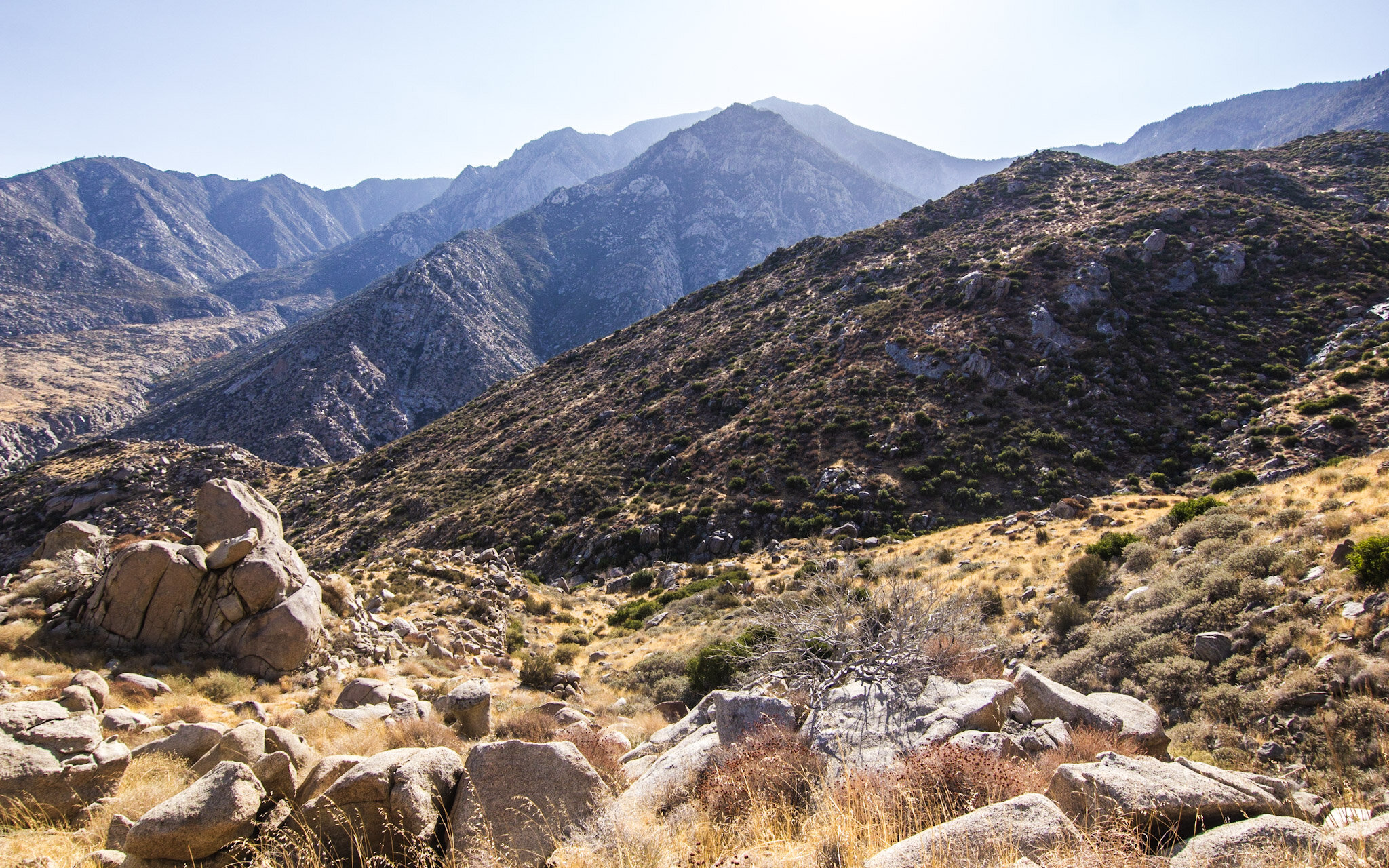
Natural History of the San Jacinto Mountains
The word ecology is derived from old Greek. It comes from the words “oikos,” meaning homes and “ology,” meaning the study of. Thus, ecology means the study of homes. This modern scientific term refers to the body of knowledge that deals with the interrelationships between living organisms and their environment. The environment is that part of the Earth that provides physical necessities for plants and animals to survive, such as food, air, water and mineral nutrients. It includes all of the conditions that affect living organisms, from the clouds in the sky which may provide much needed moisture, to the winds that blow and scatter seeds, to the sun that shines on the Earth providing a continuous flow of energy.
There are many different biotic communities in the San Jacinto Mountains, ranging from desert scrub on the east side to pinyon-juniper of the south side around to the oak woodlands of the western slopes culminating with the sub-alpine at the peak. Most of the mountaintop is a mixed conifer forest. Available moisture, temperature and soil conditions greatly influence the types of plants that can survive in an area. In turn, each of the communities supports a different mix of animals, the wildlife community.
Mt. San Jacinto State Park is part of the California State Park System. It is located within the Santa Rosa and San Jacinto Mountains National Monument. Click here for a copy of the park website (Spanish version).
About 30,000 acres of the high country of Mount San Jacinto is designated as wilderness. The California Department of Parks and Recreation manages about 10,000 acres (15.6 square miles) of Wilderness and another 4,000 acres (6.25 square miles) classified as State Park. To the north and south is the San Jacinto Wilderness managed by the United States Forest Service.
The National Wilderness Act and the California Wilderness Act define wilderness as “an area where the earth and its community of life are untrammeled by man, where man himself is a visitor who does not remain;” in contrast to those areas where man and his own works dominate the landscape. The managers of wilderness are charged with the task of securing for present and future generations the benefits of an enduring resource of wilderness. For this reason regulations have been established to control public use of the Mount San Jacinto Wilderness.
The regulations in the State and Federal Wilderness vary to a degree, but they are managed with the same objectives in mind:
1- Limit the impact of people so that the wilderness resource remains basically unaffected by man.
2- Assure that the opportunity for solitude exists for those who visit the area.
In general, you should expect a primitive experience. The Forest Service Wilderness has no facilities of any type. Water is obtained from springs and streams that may go dry in late July or August. In the State wilderness there are designated campsites and pit toilets. At Round Valley there is a developed spring with water all summer. The other camping areas (Strawberry, Tamarack and Little Round Valleys) depend on intermittent streams for their water supply. At Round Valley there is a developed spring with free flowing water from a pipe. In most years, water flows from the pipe all summer. All water sources should be treated prior to use, for both drinking and cooking. In the summer, consult with the rangers for water availability updates.

